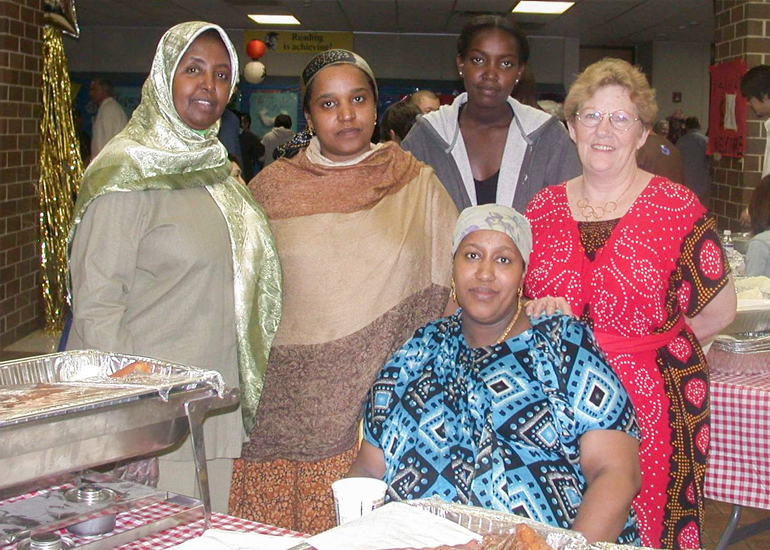
In May 2020, we published the first of a two part series in Connect Business Magazine. Our initial article spoke to why businesses should incorporate refugees, asylees and immigrants into their workforce. In the upcoming issue of Connect Business Magazine, part two will be published, which outlines some key community resources that can help businesses with this effort. As our initial article was published while businesses across our region were closed, we have received permission to republish a portion of the article below, for those who may have missed it:
The Hidden Workforce
With a regional unemployment rate hovering around 2% [Note: When this article was initially drafted, unemployment rate hovered around 2%. Despite the 6.1% unemployment in the Mankato-North Mankato MSA in August, access to talent remains a key concern for businesses in our region], one of the greatest struggles faced by area businesses has been the attraction and retention of the talent they need to get their products out the door. While efforts by both our public partners and Greater Mankato Growth to improve the livability of the region have helped create a 4.96% population growth rate between 2010 and 2018, the even higher job growth rate in the community has employers struggling to fill their open positions. This explains why in 2017, over 45% more people commuted into the Mankato-North Mankato Metropolitan Statistical Area (MSA) for work than who commuted away.[1] To help address this, more focus has been paid to employing what has been called the “Hidden Workforce”.
In this first of a two part series, the importance of tapping into this resource will be discussed. In part two, we will discuss practical and legal implications on how to incorporate this workforce.
While there is no singular definition of the “hidden workforce”, the groups most often included are the formerly incarcerated, the disabled and refugees, asylees and immigrants. The U.S. Chamber of Commerce notes that 75% of former inmates are still seeking a job one year after their release.[2] The Wall Street Journal reported in early 2019 that the unemployment rate for people with disabilities, though declining rapidly, is about double that of those without disabilities.[3] With more than 53 different languages spoken by residents of 26 different racial and ethnic backgrounds in Greater Mankato, it is becoming more important for employers to tap into the growing pool of refugees, asylees and immigrants.
It is for this reason that Greater Mankato Growth has worked with our business community to offer tools and training on how to successfully employ this pool. Greater Mankato Growth remains committed to encouraging equal employment and to helping our member businesses combat the current talent shortage. Many of our member businesses have found success tapping into this hidden talent pool. Kelly Duncan, Human Resources Manager with Jack Link’s, had the following to say about the benefits of hiring refugees and immigrants:
“Jack Link’s has partnered with the Council of Churches for the past four years, as they were a strategic source of talent for our business as well as a great community partner for our current team members. Tapping into the population of Refugees/Immigrants has allowed us to continue to staff our business and grow our partnership with the Greater Mankato community. “One of our Jack Link’s values is relationship driven (I foster collaboration with internal and external partners and respect diversity, because people matter). Mankato Jack Link’s location is proud to support the growing population of Refugees/Immigrants in the Greater Mankato region to allow them to enhance their knowledge and skills while also providing for their families and often times still going to school (sometimes even learning ESL and getting their GED). At Jack Link’s we also enjoy the education they have brought to our facility teaching us their culture, language, and enjoying some Sambusa!”




